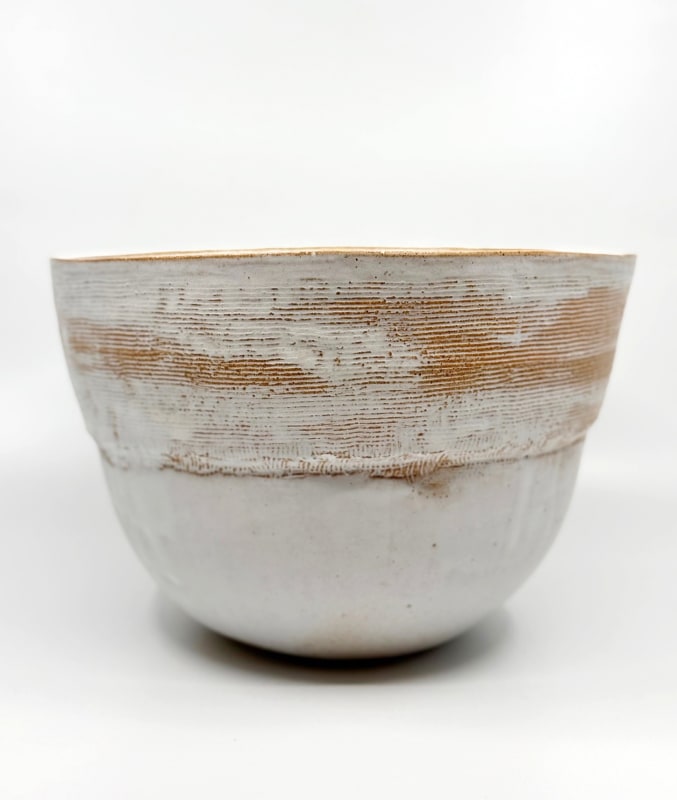The artist Iva Polachova creates beautiful objects that range from simple bowls, jugs and platters, to decorative vessels and sculptural pieces. The ceramicist is a hand-builder and uses traditional methods of moulding, hand coiling and pinching to create her ceramics, sometimes even using moulds from nature such as shells. Iva Polachova uses a diverse range of clays, from the coarse to the refined, depending on their particular qualities. The artist uses very few tools and the pieces are created using simple implements such as scrapers and rasp blades. These leave understated tool marks visible under the glaze to highlight the gently textured surfaces and are a subtle reminder of the handmade process. It's a method which the ceramicist feels strengthens her physical connection to the work. She uses a limited palette of mainly white ceramic glazes with the occasional use of oxides and slips beneath.
The creative process, the engagement with the clay and rhythm of making are crucial to the ceramicist's work. Iva Polachova enjoys the focus, the stillness, the movement and the flow when she creates her exceptional hand-built wares. The artist will periodically return to certain forms or themes to explore how her approach and perception has developed over time. These are ceramics that embody a truth to materials, a pared-down aesthetic and cohesion of elements. The fluidity, clarity and simplicity of Iva Polachova's vessels are imbued with a serene calmness.
The artist is deeply inspired by Paul Klee's thoughts on the artist distilling from nature, the sculptor Constantin Brancusi's theories on the 'essential' in art, and the writings of Agnes Martin on art and beauty: 'art is the concrete representation of our most subtle feelings'. Artistic influences are accumulative and play a significant role in Iva Polachova's life and work.
Iva Polachova is based in London. Her qualifications include a BA Hons in History of Art and a B-Tech in Art and Design (3D). The artist has shown throughout the UK including London, Cornwall and Belfast, and exhibited abroad in Tokyo, Japan.

